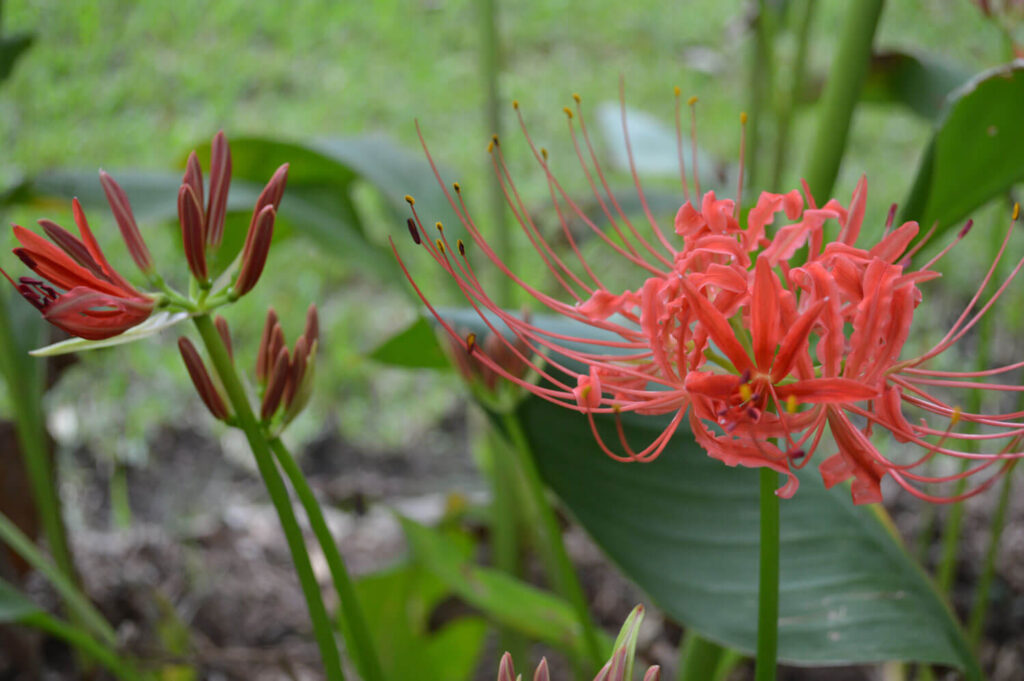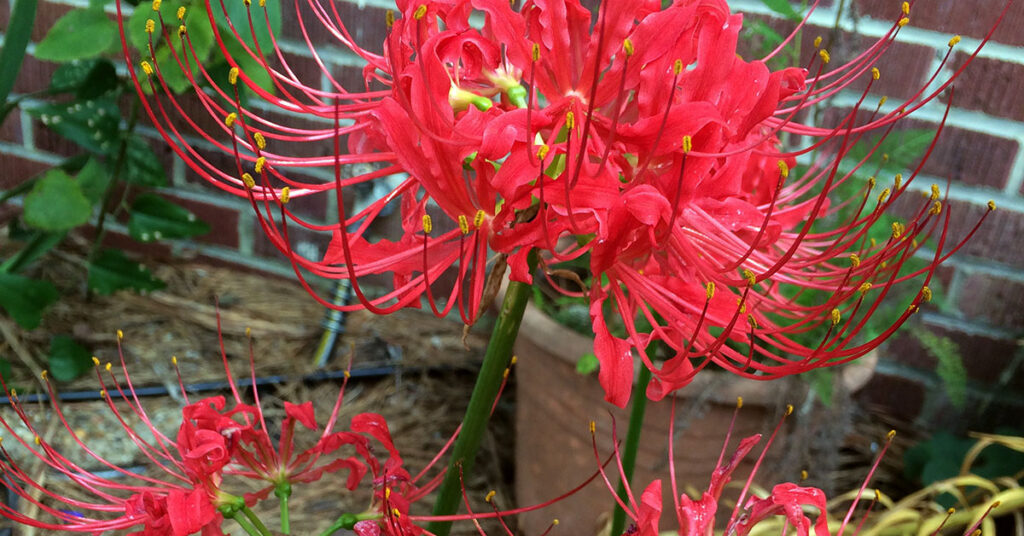In the deep South, fall brings a bright red carpet of strange spider-looking blooms. You can find them wherever an old homestead may be found or even deep in the woods where an old homestead used to be. The red color adds vibrancy to the waning fall landscape.

Although these bulbs are not native to the United States, they were introduced from China in the mid-1800s and have been found here ever since. They are prolific in the South.
Though they are perennial bulbs, they don’t always bloom every year. Sometimes only the leaves will make an appearance. Blooming seems almost haphazard, though weather is probably a strong influence on blooming. The LSU ag center indicates that regular watering helps with uniform flowering.
In the Amaryllis family (Amaryllidaceae), these bulbs can be planted almost any time of the year. The leaves may come up first in spring, then disappear. The flowers appear in the fall (September).
How To Grow Red Spider Lilies
In my opinion, these flowers give you the best results when planted in bunches for a burst of dramatic color.
They are bulbs, so well-drained soil is imperative, or the bulbs will rot. These plants will grow in full sun, but it seems that part sun is best.
Spider lilies can be grown in USDA zones 7 to 9.
The bulbs will reproduce, so you must thin them out every few years. Transplanting may disrupt the flowers that year.

Other Notes
The flowers appear to be deer resistant. I’m surprised that anything is surviving in my yard this year after a family of deer has made this their nighttime haunt. However, the red spider lilies remain unscathed (or should I say untasted).
These flowers will last a long time as cut flowers – always a plus, especially in fall when there are so few blooming plants.
As with any bulb, allow the leaves to die off naturally rather than cutting them down. The leaves produce the food that provides for flowers, so if you cut them off early, the bulb may not have the energy to make a bloom.
I have interspersed these bulbs (as well as daffodils) in with my liriope to add some color to these shady/part sun areas.
